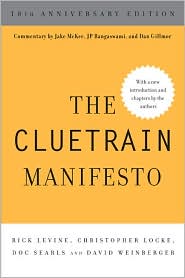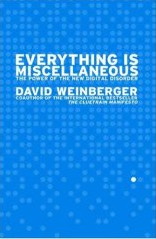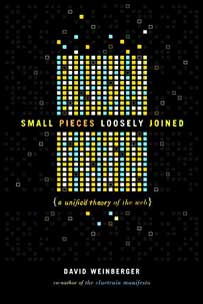Culture of Hope
Forum d’Avignon is an annual get-together in France to talk about culture, by which most of the attendees (and especially President Sarkozy who came to give a speech) mean how they can squash the Internet and retain their stranglehold on culture. A little harsh? Maybe, but not entirely unfair. I went last year, and both Jamie Boyle and I felt so oppressed by the relentless Internet Fear exhibited by the other presenters that we felt obliged to say, “You know, there are some good things about the Internet also.” We also both found a cadre of fellow travelers among the attendees and a handful of the other presenters, including many of the conference organizers. (Here’s a set of my posts from the Forum.)
The Forum today invited a set of people to respond to four questions. The first question is: “1. Does culture / creative imagination give you a reason to hope?” With the above as context, here is my response:
Of course! If not culture, then what would give us reason to hope?
There are a few elements coming together that make this an especially hopeful time…and a few elements that I take as cold water being thrown in the face of hope.
The elements of hope include: (a) the scale of content, (b) the intense inter-linking of that content, (c) the growing open access to that linked content, and (d) the new forms of collaborative sociality that are emerging that (e) value difference and disagreement.
(a) The scale means that we now have works that can matter to us in any way we can imagine, rather than relying upon centralized authorities to decide what counts. Of course, from those centralized sources we have gotten great works of art, but we have gotten far more gross, coarsening, commercial crap. (b) The fact that these elements are linked means that we can now explore ideas all the way to the ends of our curiosity. It also means we can continuously derive new meaning from this interlacing of ideas. (c) Open access – the growth of outlets that may or may not be peer-reviewed and edited, accessible to the world for free – means that our best ideas are not locked up where only the privileged can view them. (d) The availability of these works on the very same medium that enables us to form social networks around them – the fact that the Net is equally good as a means of distributing content and as a social medium is unprecedented – has spurred innovative new ways of working and being together. Some of these new social forms have tremendous power, and are tremendously engaging; we can do things together that we never before thought possible. (E) Finally, the Internet only has value insofar as it contains and embraces differences and disagreements. A culture that does so is far more robust and far less oppressive than a culture homogenized by a timid sameness – the sort of lack of adventure characteristic of mainstream media.
Against this we have old industries that benefited from the scarcity of works and the difficulty of distributing them. They view culture as the set of cultural objects, and believe that they are entitled to continue to restrict and control access to them. They say they are doing this in order to support the artists, but they in fact are pocketing most of the artists’ wages in the name of services we no longer need these industries to provide. Culture flourishes when it is open, abundant, connected, engaged, and diverse. Such a culture supports artists of every sort. The culture of hope is just such a culture.
Categories: culture, open access, policy dw









